Research Highlights 2015
Decision Making in the Arrow of Time
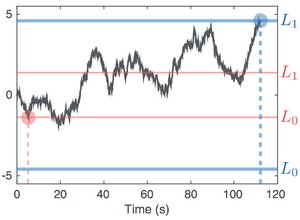
Irreversibility is a hallmark of nonequilibrium processes. It implies that time reversal invariance of microscopic equations of motion is broken at meso and macro scales. Here we show that the degree of irreversibility of a physical process can be quantified by the time it takes an observer to decide whether a movie of the process runs forward or in reverse. We derive an exact relation between the average entropy production rate and the optimal decision time and we introduce a fluctuation theorem for the decision time distribution.
E. Roldán, I. Neri, M. Dörpinghaus, H. Meyr and F. Jülicher
Phys. Rev. Lett. 115, 250602 (2015)
[PDF (426 kB)]
Polarized Endosome Dynamics by Spindle Asymmetry During Asymmetric Cell Division
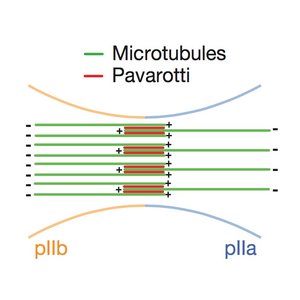
During asymmetric cell division, the molecular components of the dividing cell are distributed unequally to the two daughter cells. Here, we study the asymmetric distribution of signaling endosomes to the two daughter cells which plays an important role for cell fate determination. We show that the unequal distribution of endosomes results from an asymmetry of the microtubule distribution at the central spindle. Using a simple stochastic model, we reveal a physical mechanism by which a weak asymmetry of the density of antiparallel microtubules is amplified by kinesin mediated endosome motility to generate a strong asymmetry of endosome targeting to the daughter cells. Out model can quantitatively account for the stochastic endosome trajectories observed during division.
E. Derivery, C. Seum, A. Daeden, S. Loubéry, L. Holtzer, F. Jülicher and M. Gonzalez-Gaitan
Nature 528, 280 (2015)
[PDF (17,9 MB)]
A Local Difference in Hedgehog Signal Transduction Increases Mechanical Cell Bond Tension and Biases Cell Intercalations along the Drosophila Anteroposterior Compartment Boundary
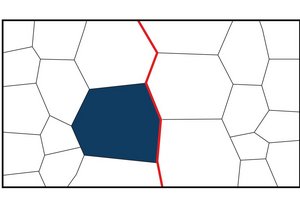
We study the properties of tissue boundaries in the context of cellular signaling. Using a quantification of boundary roughness in different signaling conditions, we show that differences in Hedgehog signal transduction between neighboring cells are key to control cell bond tension. An increased cell bond tension subsequently provides smooth and stable tissue interfaces.
K. Rudolf, D. Umetsu, M. Aliee, L. Sui, F. Jülicher and C. Dahmann
Development 142, 3845 (2015)
[PDF (5 MB)]
Continuum Theory of Gene Expression Waves during Vertebrate Segmentation
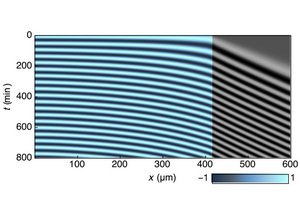
The segmentation of the vertebrate body plan during embryonic development is a rhythmic and sequential process governed by genetic oscillations of cells that give rise to collective wave patterns. We present a continuum theory of genetic waves and discuss wave phenomena that can be observed in these nonlinear wave patterns: a Doppler effekt and a dynamic wavelength effect.
D. J. Jörg, L. G. Morelli, D. Soroldoni, A. C. Oates and F. Jülicher
New J. Phys. 17, 093042 (2015)
[PDF (2 MB)]
Suppression of Ostwald Ripening in Active Emulsions
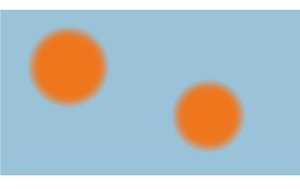
We study the dynamics of fluid droplets that turn over by chemical processes. Such active droplets exhibit unusual properties both in the simple case of first-order reactions and for autocatalytic droplets. Active droplets can have stable sizes and several droplets of equal size can stably coexist. This suppression of Ostwald ripening can be understood as a consequence of chemical reactions.
D. Zwicker, A. A. Hyman and F. Jülicher
Phys. Rev. E 92, 012317 (2015)
[PDF (918 kB)]
Interplay of Cell Dynamics and Epithelial Tension during Morphogenesis of the Drosophila Pupal Wing
We combine experiment and theory to study tissue dynamics and remodeling in the developing fly wing. We quantify the contributions of different celular processes to tissue deformations. Using this information we develop a theory of tissue mechanics which reveals key principles underlying tissue deformation. We find that during pupal development, the fly wing is shaped in an active process that is guided by mechanical boundary conditions. We can explain the role of the extracellular matrix protein dumpy in this process and reveal the mechanism by which dumpy mutants exhibit misformed wing shapes.
R. Etournay, M. Popovic, M. Merkel, A. Nandi, C. Blasse, B. Aigouy, H. Brandl, G. Myers, G. Salbreux, F. Jülicher and S. Eaton
eLife 4:e 07090 (2015)
[PDF (14 MB)]
Scaling and Regeneration of Self-Organized Patterns
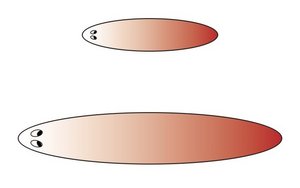
Biological pattern formation such as for example the development and regeneration of an organism is often scalable with organism size. Here, we introduce a generalization of Turing patterns that is self-organized and self-scaling. A feedback loop regulates the reaction rates of a Turing system, thereby adjusting pattern length scales proportional to system size. Our model captures key features of body plan regeneration in flatworms as observed in experiments.
S. Werner, T. Stückemann, M. Beirán Amigo, J. C. Rink, F. Jülicher and B. M. Friedrich
Phys. Rev. Lett. 114, 138101 (2015)
[PDF (295 kB)]